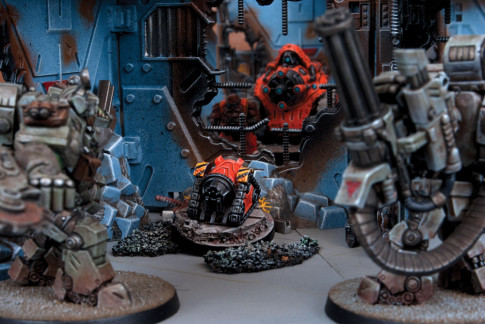
A closer look at the Ruins Sprues
The number one question I heard when talking to people at the UK Expo, and at our own Open Day about Battlezones Ruins Sprues was ‘what do they look like’. So I thought today we could look at what the ruins are, and talk about why ruins are so importnat in the landscape of scenery.
 I actually really like ruins sprues
I actually really like ruins sprues
Wanna know WHY I like them? There are only so many times I can say to someone ‘I really shouldn’t have done that’ in reference to scenery, and before, the only way to work on a piece with weapons damage was to either plastacard the design, then cut it out of plywood, or melt plastic. And to be honest, I’m not that handy in either – I’m the sort of hobbyist that has huge ideas, and superglues her fingers together before the first real challenge.
So, when I was shown the ruins sprues, I was quite honestly delighted. With them, you can take a gorgeous piece of scenery, and make it more authentic. There’s really no better way to represent a hole in the wall of your building than these pieces, but I’ve seen people take it further still.
So, I thought I’d share something I spotted at the UK Expo about how to work with ruins sprues, and maybe add a touch of moss or other greenery to pieces that might be weathered or distressed. And I’m sure people know about this, but just in case…
Once you’ve painted your pieces, all you need is some PVA glue and some flock.
Spread the PVA glue in the mossy pattern you’d like to use, then lie your piece IN the flock. I’ve found dusting it on also works, if the piece is angled slightly, but results in less uniform adhesion when it dries. After a little while, flip the piece and allow it to dry.
You can then drybrush it to pick out details, or leave it as is. Another watered down coat of PVA seals the whole thing. I’ve done one single panel like this as a marker point on a map, just lying loose, as if it were a collapsed wall.
I’ve experimented to try and get flat, but I quite like it when it’s a bit gnarly and grotty looking. You could also use it as a fungus/spore type effect, especially if you combine it with patterning or smoothing them with filler.
I’m combining this currently with some ivy that I picked up online. Obviously, if you’re not working with buildings that are that weathered and distressed, this might not be a good idea for you, but you could put it around the bottom of the buildings for a bit of character, but for battlefields that are abandoned and being fought over, or for character pieces, this might be a great idea. And another great use for our pieces are backdrops for dioramas, which is what I’m looking at myself next. I’m really excited to do a two sided duel with a ruined piece in the middle, bisecting the board!
On Thursday, I’m going to be talking about Narrative campaigning with Ruins sprues, but until then, what do you think? Can you see a place on your table for these pieces, or do you prefer pristine cityscapes that are pristine and just look abandoned?
Grab your ruins sprues and other scenery from our webstore or your FLGS.
